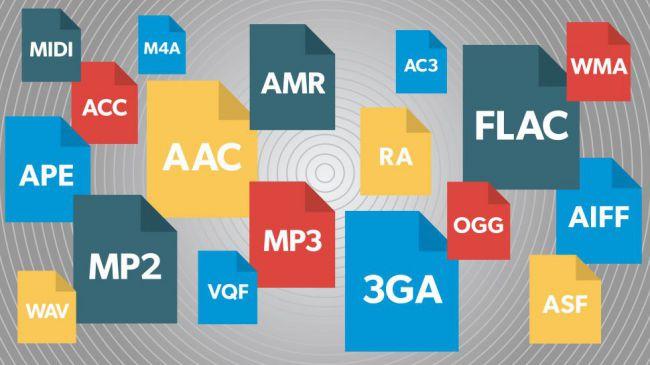Selecting a high-res DAP or headphones can be daunting if you don't know about audio format with different Sample Rate And Bit Depth.

Audio formats support is very important for audio products, especially for players. We recommend that you look for a player that supports, at a minimum, ALAC, DSD, and FLAC files since those are the most common codecs that high-resolution download sites use. Not only are all of these handled natively (without the need of conversion) but each of them can be encoded at different bitrates. Audio bitrate quality is quite like megapixels in digital cameras - the higher the bit depth and sample rate, the more high-quality an audio file is. 
The audio you hear on a regular CD, or on a standard Spotify stream, is 16bit/44.1kHz. You could also record higher-quality audio at, say, 24bit/192kHz, which means that the software is sampling the music 192,000 times every second, and is able to draw on 24 bits of information to accurately describe it. We do quote the highest possible values - in some cases, those can be as high as 768 kHz, which is seventeen times the density of a CD uncompressed audio (44.1kHz)!
Audio encoding keeps evolving. Along with ALAC, FLAC, and DSD which are popular lossless audio codecs, the common types of digital audio formats often supported by audio-only DAP's include:
- AAC(not hi-res): Apple's lossy audio compression system that is the default format for products such as the iPod, iPhone, and iPad. Most songs purchased and downloaded from the iTunes Store also come in this format. However, not all DAPs support this.
- AIFF (hi-res): Apple's alternative to WAV, with better metadata support. It is lossless and uncompressed (so big file sizes), but not hugely popular.
- ALAC (hi-res,Apple Lossless Audio Codec) Commonly used by iOS devices
- APE (hi-res) A free and very efficient lossless codec from Monkey’s Audio
- AptX (hi-res) A near-CD-quality audio codec supported by some Bluetooth devices
- DSD (hi-res,Direct Stream Digital).It has of recent become the benchmark for high definition sound- mainly for audiophiles with extremely high-resolution libraries. It’s definitely not something you have to use if you buy a DAP, but it sure is nice to have one-iBasso DX220 supporting DSD. DSD files come in several ‘resolution densities’ and the highest resolution currently used commercially is the DSD512 (Octa-DSD), which samples audio of rates up to 22.5792 MHz, which is 512 times the audio quality of a regular CD.
- MP3 (not hi-res): Undoubtedly the de facto standard digital audio format that all DAPs support.
- MQA ( hi-res,Master Quality Authenticated) A backward-compatible lossless codec that applies a digital fingerprint to a file to guarantee it was sourced from the original master recording
- WMA (hi-res): Probably the second most commonly supported audio format for DAPs after the MP3 standard.
- WAV (hi-res): Files come mostly in an uncompressed (and therefore lossless) state normally encoded in the LPCM (Linear Pulse Code Modulation) format. It's uncommon for people to use this format as the files can be quite large. However, DAPs tend to support this for backward compatibility.
- OGG Vorbis (not hi-res): an open format that an increasing number of DAP (and PMP) manufacturers are building into their hardware. Some users who have tested the audio quality of MP3 versus OGG side-by-side claim that audio encoded using OGG (at 192 kbps and lower) is better quality than encoding in the MP3 format.
- FLAC (hi-res): this is a lossless audio format that is the least supported type in DAPs. However, it is gaining in popularity and is especially useful for audiophiles who want to listen to their FLAC digital music library without having to first convert.
Digital Audio Players feel at home with pretty much any audio format. One of the above may be made up. Try to enjoy your hi-res music with hifi dedicated portable players or headphone, and you’re in for a wild ride.
IBASSO Portable Player DX220 review | Hifigo




1 comment
Bob K
Great primer! I’m new to this, so it was nice to have all the acronyms unscrambled and defined.
Leave a comment
All comments are moderated before being published.
This site is protected by hCaptcha and the hCaptcha Privacy Policy and Terms of Service apply.